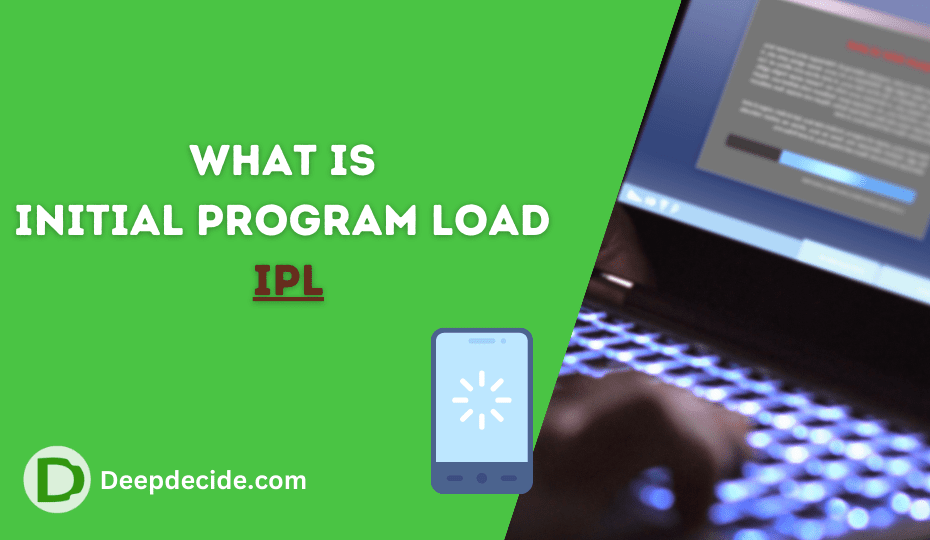Last Updated on: 16th October 2023, 04:03 pm
The acronym, IPL (Initial Load Program) is a commonly used term in the computing and information technology profession.
It refers to the process that a computer or a system goes through when it’s powered up or reset.
Simply put, the Initial Load Program is the procedure that the system’s hardware undertakes when initializing or loading the initial state of the computer system.
Functionality
The foremost purpose or function of the IPL is to run tests that ensure the computer system’s hardware is functioning properly.
These preliminary test parameters are hardcoded into the computer’s BIOS (Basic Input/Output System) during the manufacturing process.
These include checking the hard drive, memory, processor, and other vital components of the computer system.
Following these diagnostic tests, the IPL process turns to loading the basic software programs needed for the computer system to function effectively.
The main software to be loaded includes the operating system, drivers, and other vital utilities.
The IPL process will search for the operating system in the specified boot device sequence. Once found, it will load the operating system into the system’s memory, marking the conclusion of the IPL process and the commencement of the regular computer process.
Resetting the Computer
Whenever a computer undergoes a reset, it undergoes a similar IPL process. However, the difference is that the reset doesn’t include power interruption, therefore it may not include certain hardware checks. Instead, all running software programs and temporarily stored information are normally cleared, and the system’s software is loaded afresh.
Different terminologies might be associated with the resetting process, depending on the type of computer system and the operating system in use.
For instance, a warm boot, or a soft boot, are common terminologies used to refer to a reset rebooting process of a computer.
Possible Challenges with the IPL Process
Like any other system process, the IPL can face glitches that might result in computer malfunction or failure to boot. Some of these issues might include hardware failures, especially problems with the motherboard, hard drive failure, BIOS failure, or issues with the power supply unit.
Additionally, the anomaly could arise from the software end, such as a corrupted operating system or missing engine files. Such software issues could occur due to inappropriate system shutdown, attacks from viruses, or human error.
Troubleshooting the IPL
Fortunately, the computer system has built-in troubleshooting mechanisms to pinpoint any failures during the IPL process. It does this using error messages, beep codes, or status codes depending on the system’s manufacturer. For instance, multiple beeps from the system may indicate a motherboard or memory issue.
In conclusion, the IPL (Initial Load Program) is a critical component of any computer system that ensures the hardware and software are fully functional before the system is fully operational.
It is the first step towards setting up the system’s environment, enabling subsequent software and applications to run on the device seamlessly.
Understanding the Initial Load Program (IPL) process
The Initial Load Program (IPL) is a critical stage in every computer system’s operations. Its primary function is to initiate the booting process, painstakingly analyzing and validating both hardware and software components of the system.
IPL Process
The IPL process is programmed to check the system’s components one by one, starting with the hardware aspects. It begins analyzing the motherboard, processor, memory, hard drive, and other elementary components to ensure they’re functional.
The bearers of this responsibility are the POST (Power-On Self-Test) procedures embedded in the computer’s BIOS (Basic Input/Output System) from the point of manufacture.
Once the POST procedures are successful, the IPL process proceeds to the boot sequence. It searches for the bootable device, which could be a hard drive, flash drive, or an optical drive, based on preferences preset in the system’s BIOS.
When the IPL identifies the bootable device, it starts loading the boot sector into the computer’s memory (RAM). This part of the IPL is instrumental in loading the bootloader or boot manager, responsible for loading the operating system.
Soft IPL and Hard IPL
There are two primary types of IPL; Soft IPL and Hard IPL. Soft IPL is more of a re-IPL process, where the system is rebooted without going through the checking of hardware or POST testing.
On the other hand, Hard IPL is complete, involving hardware checking and subsequent loading of both boot manager and the operating system.
IPL Errors
The IPL process can sometimes encounter hiccups resulting from hardware malfunctions or software issues. Hardware errors might be triggered by faulty motherboards, damaged hard drives, or BIOS failures, among others.
On the other hand, software-related IPL errors usually stem from damaged Operating Systems or missing system files. These could result from incorrect system shutdowns, malicious software or viruses, or even human error.
Typically, the system offers signals and cues when there’s an IPL error. Error messages may show on the system interface, or the system may beep in certain codes signifying certain errors.



